BACK
TO WEATHER-BLOG MENU
New!
Fine Art Prints & digital images for sale-
Welsh Weather
& Dyfi Valley landscapes Slide-Library - Click HERE
| It's
February 7th and a rather grey and chilly day with a raw Easterly
breeze is heralding the arrival of the next cold spell of the winter.
In terms of temperatures, it won't be as severe as the last one
(regardless of what the tabloids say - as usual!) but some sharp
overnight frosts can be expected in places and snow showers are likely
to affect areas inland from windward coasts in the east. More
widespread, perhaps disruptive, snow is possible at times towards
mid-February, if small areas of low pressure form in the airflow and
track in over the North Sea, picking up moisture as they come along:
finally, any attempted transition back to the Atlantic pattern of moist
sou-westerlies will have an attendant threat of snow as the airmasses
battle it out. Indeed, here in Mid-Wales some of the heaviest snowfalls
in recent winters have been during February and March - even though the
latter month is, technically-speaking, the first of Spring. But that's looking ahead: let's now have a look at the period from mid-January onwards. Here's a photo taken on January 14th, from the last post, where I described a walk up the Machynlleth-Llanidloes mountain-road: 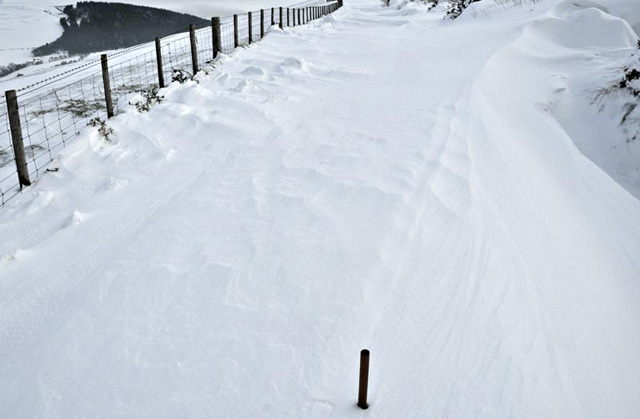 Just three days later, after much cloudy and wet weather, I repeated the walk and this image is of roughly the same spot and with the same measuring-stick: 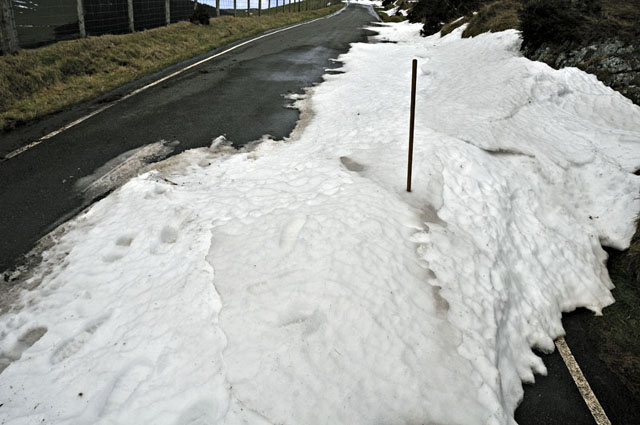 It's striking to see how rapidly snow can melt when the thaw is aided and abetted by heavy rain! The image below actually shows grooves in the snow formed by rainfall run-off: 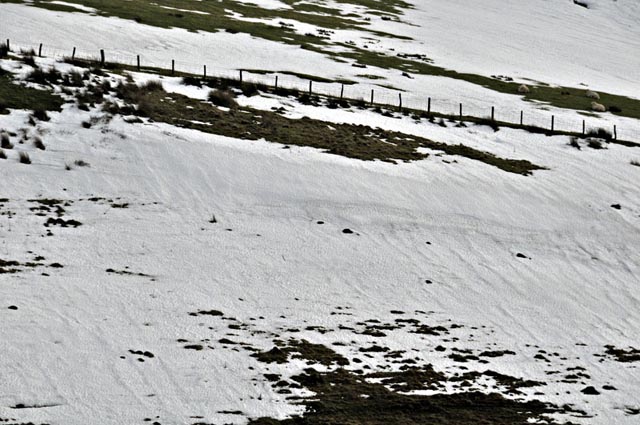 On this occasion, the pass was still impassable to most vehicles. Someone got through here in a pickup truck, but they returned back down a while later to report that the top of the pass was still a no-no. 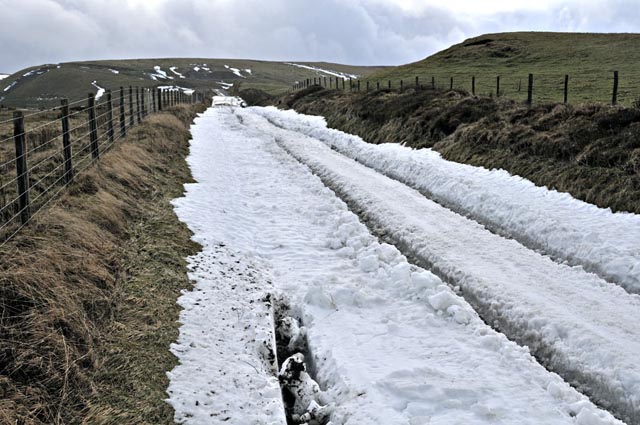 Another before/after pair of photos: on the 14th: 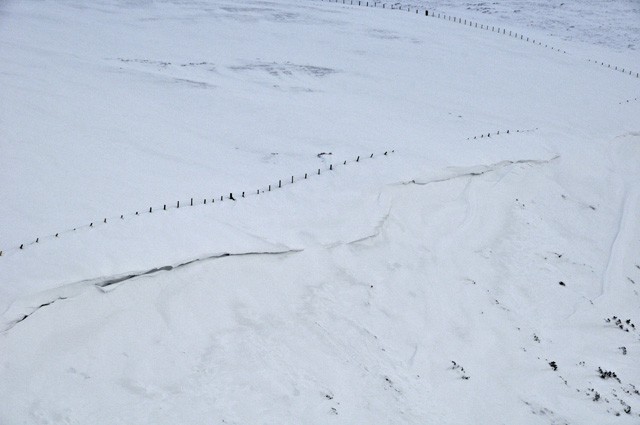 And on the 17th. The drifted cornice of snow has started to collapse in places. This is one way in which avalanches can be initiated. 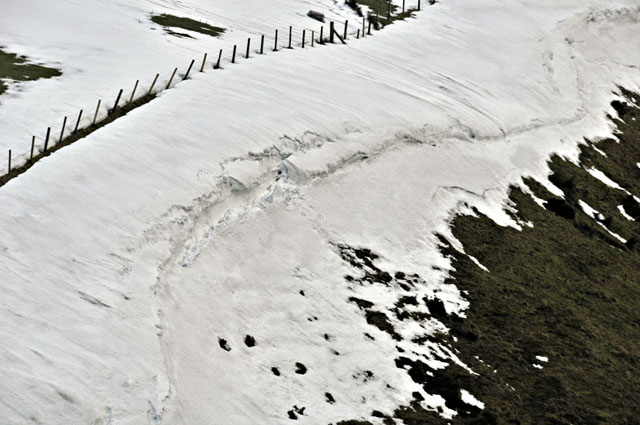 On the 19th, the pass was finally open - the first time since before Christmas, a long closure compared to most winters and a hallmark of the relative severity of this period. 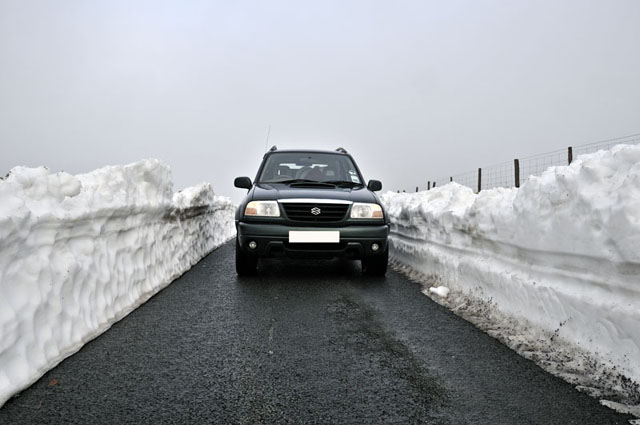 The top of the pass on the same day with piles of snow tipped by the JCB that is used to clear the road. 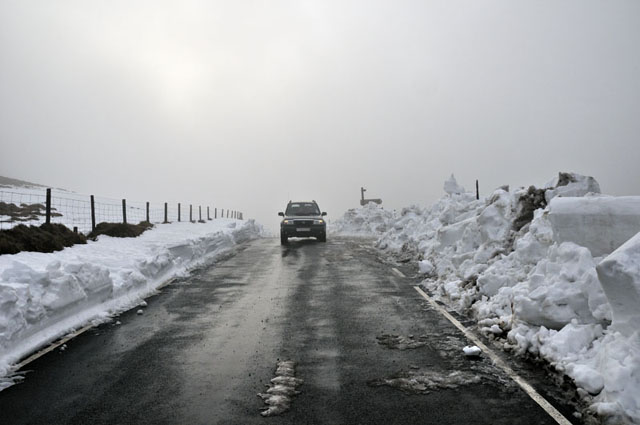 Milder, but not warm conditions then prevailed for the rest of the month and into February, but with occasional snowy interludes that primarily affected the hills, as this shot of Cadair Idris, taken on the 29th, demonstrates.... 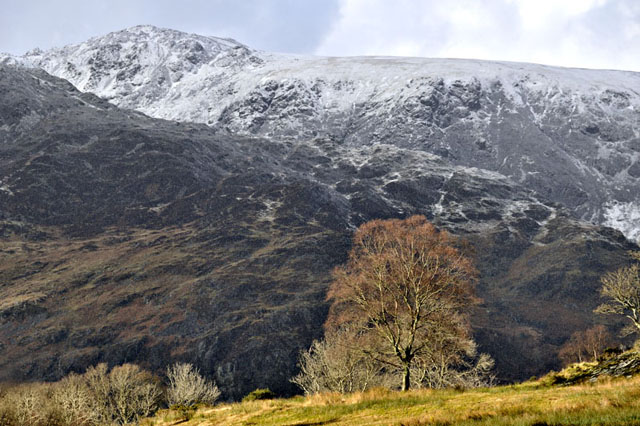 On the morning of the 29th, before the clouds broke, I had taken my jeep for some MOT work at Ceinws, four or five miles up the Dulas valley to the north of Machynlleth. Dropping it off not long after daybreak, I then walked back home under incessant light to moderate rain. I followed the back-lane that leads down past the Centre for Alternative Technology and then crossed the Dyfi and followed the cycle-path back into town. During the hour-and-a-bit that it took to do this, the only sound (apart from distant traffic on the main road) was that of dripping trees. There was not one other sound - no birdsong at all. Everything along the roadside hedgerows was dull and bedraggled. It presented to me a horrific vision of a dead, inert world, with the rational bit of me struggling to remind myself that in winter the land often sleeps and will awaken soon. By February 5th, bright sunshine and temperatures pushing double figures gave a wholly different theme to things: it was as if someone had pushed a button marked "Spring. Please press to activate." I spent the afternoon gardening, preparing for the coming planting-time, surrounded by birdsong, then headed off to Tywyn, where a major sea-defences project is underway. I had planned to get some images of the goings-on down there, and this was the first decent light for photography in several days. The defences are going to take the form of several breakwaters, built out of large, 6-10 tonne boulders. These are brought in on each high tide on large barges carrying tippers. The barges come in as close as possible and dump the boulders onto the beach. My visit coincided with an ebbing tide, so the barges were anchored-up a little way offshore: 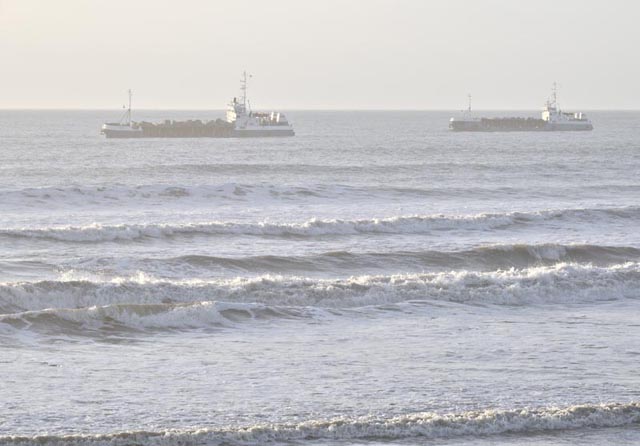 On the beach, as soon as the tide has gone out sufficiently, these huge grabs work flat-out: 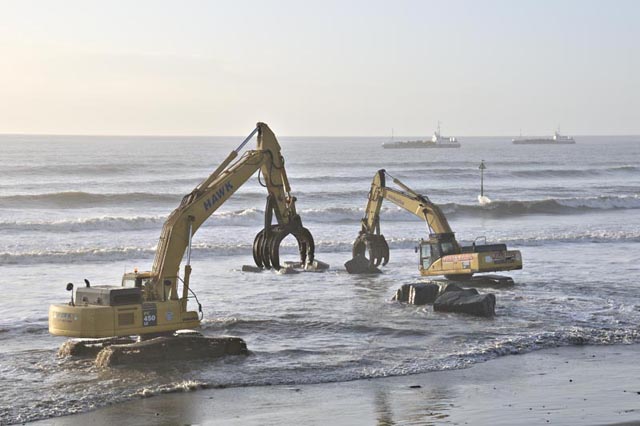 One picks out the boulders from the pile where they have been tipped: 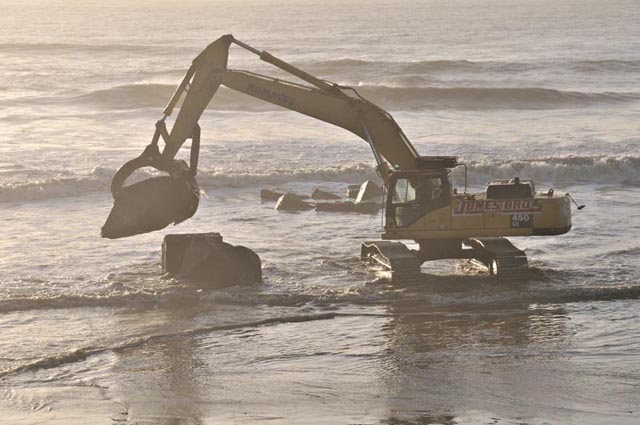 Placing them within reach of the other: 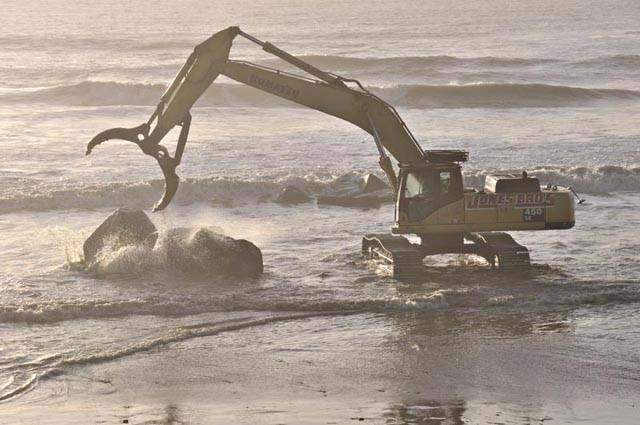 One by one, they are then carted along the beach.... 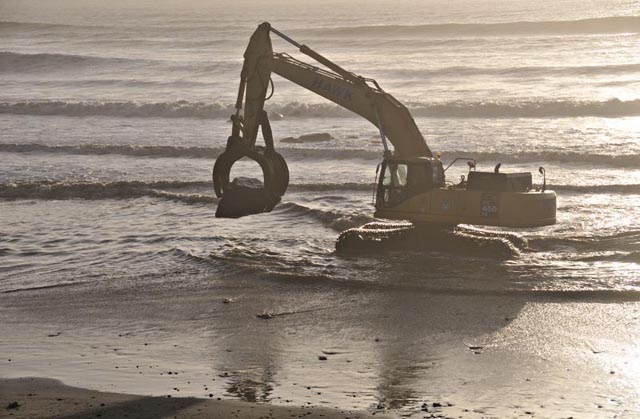 ...and placed in the infant breakwater structure. 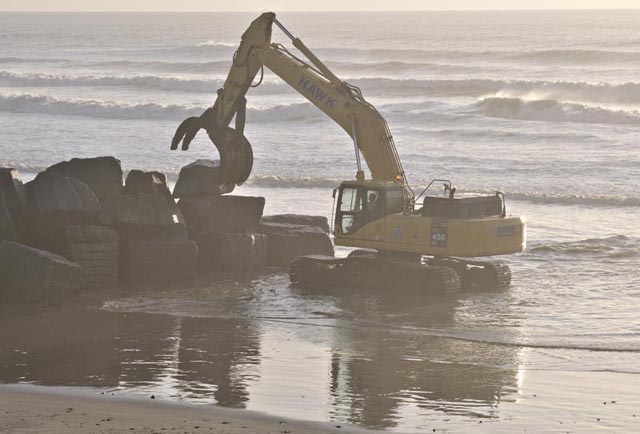 The work is expected to go on for a couple of months apparently. As the scheme unfolds I'll report on it. Tywyn has seen increasing storm damage and beach erosion in recent decades, not helped by the fact that the sea-front faces due south-west, right into the teeth of your typical Atlantic storm, and due to the shape of Cardigan Bay, big, long-fetch swells are a problem here more than at most of the other coastal towns hereabouts. Hopefully, once finished, these structures will take some of the energy out of those waves. |
|
BACK TO WEATHER-BLOG MENU New! Fine Art Prints & digital images for sale- Welsh Weather & Dyfi Valley landscapes Slide-Library - Click HERE |